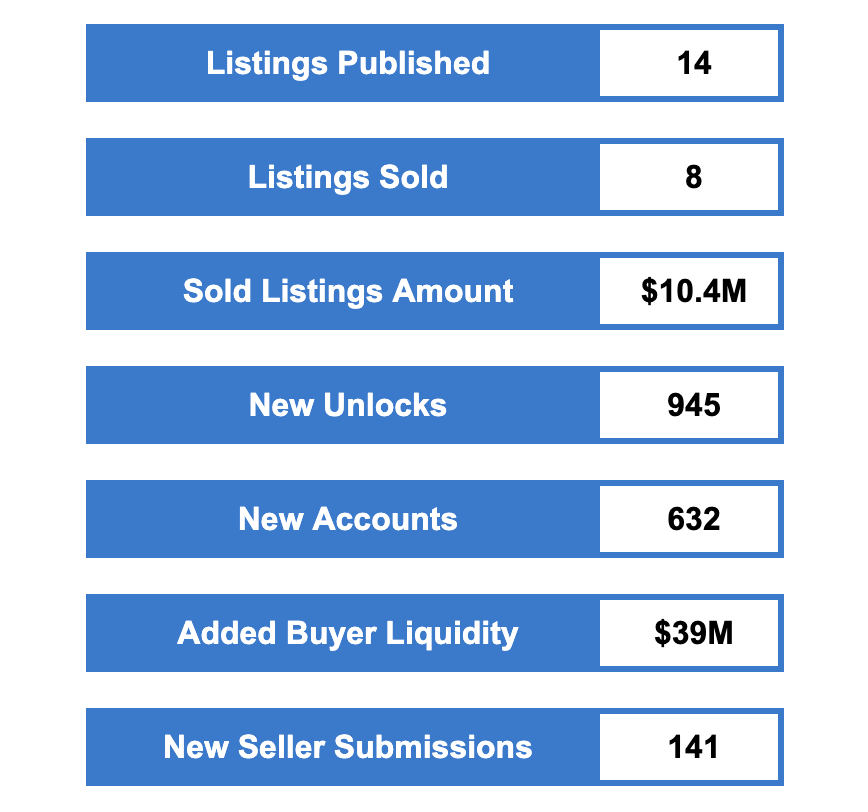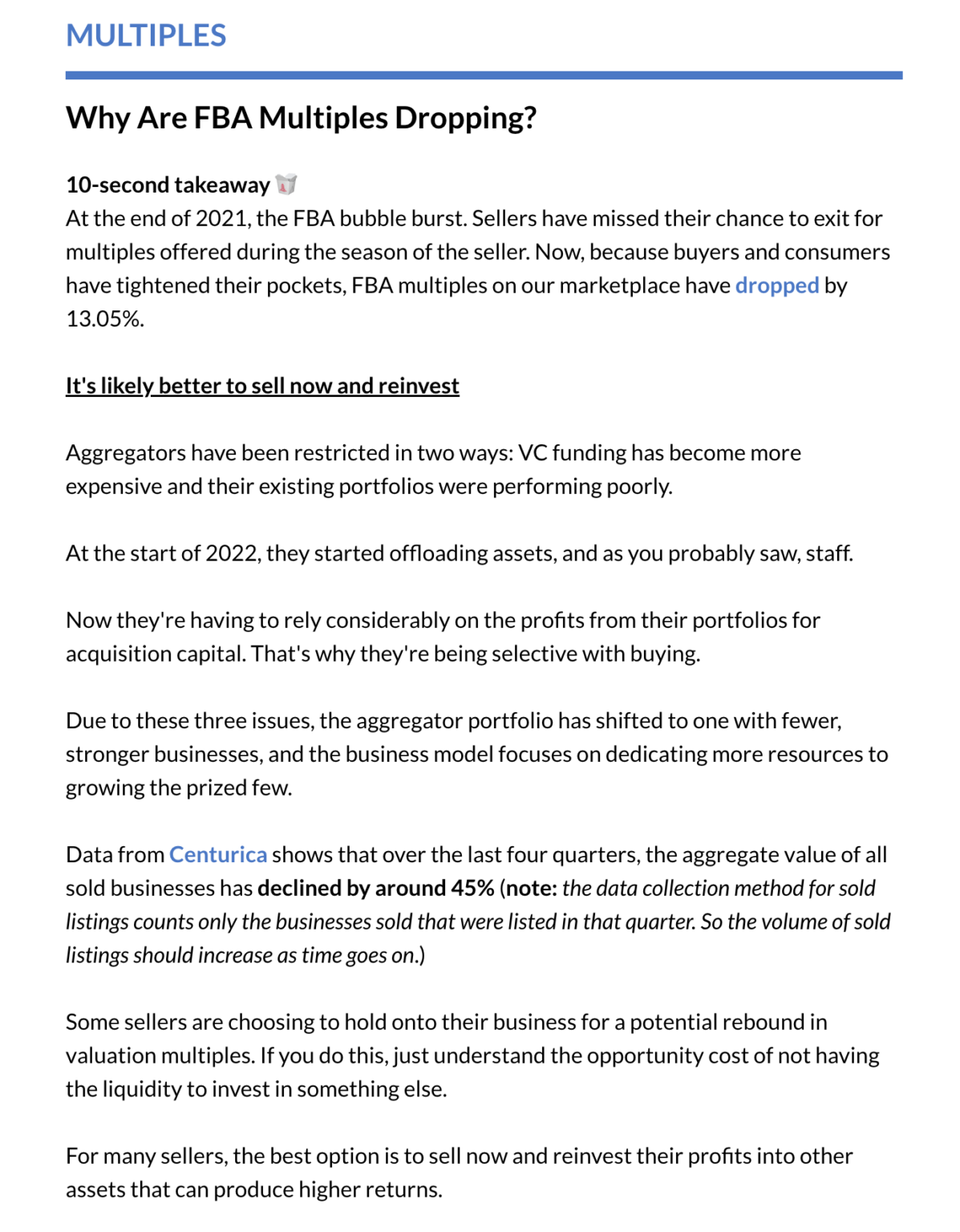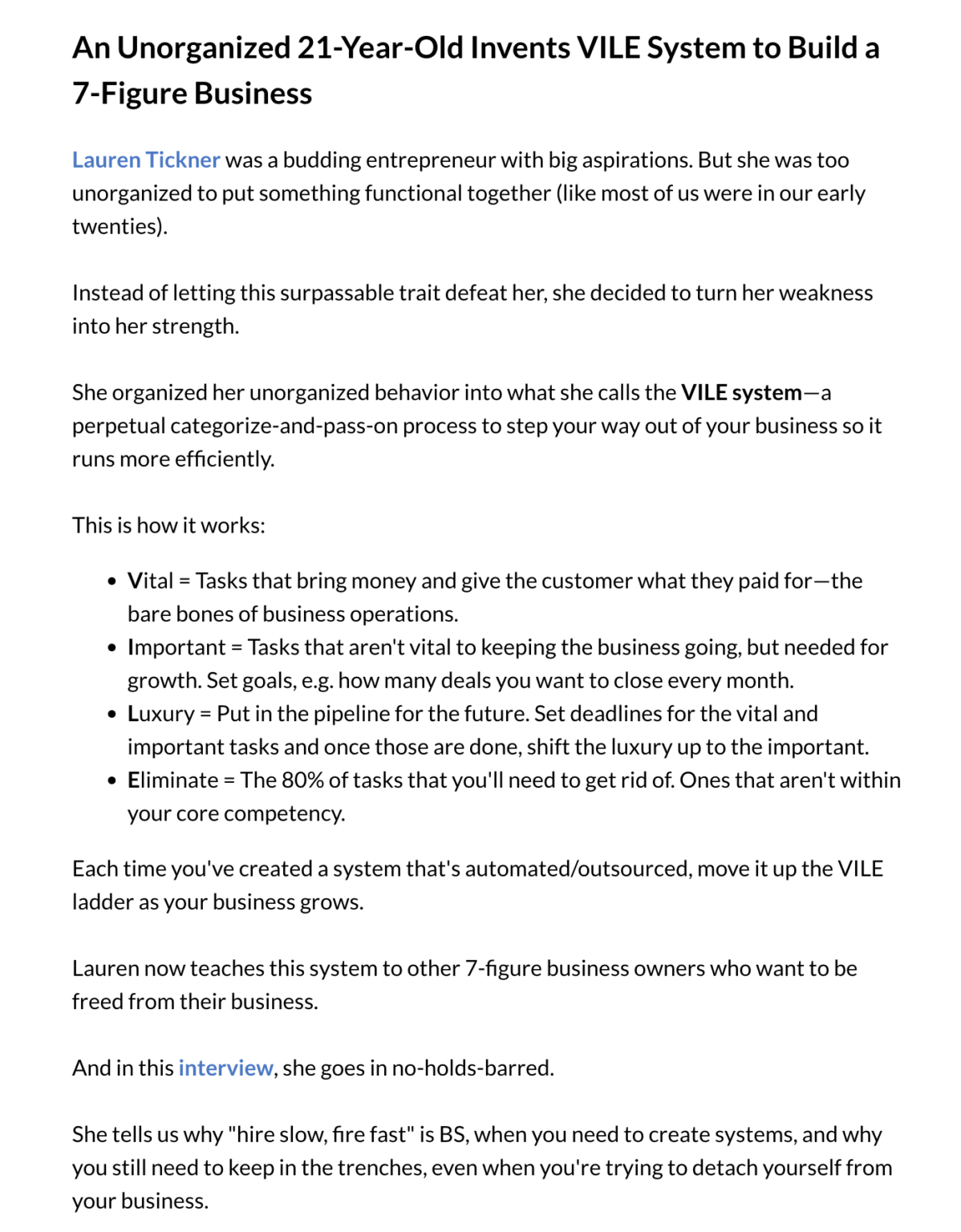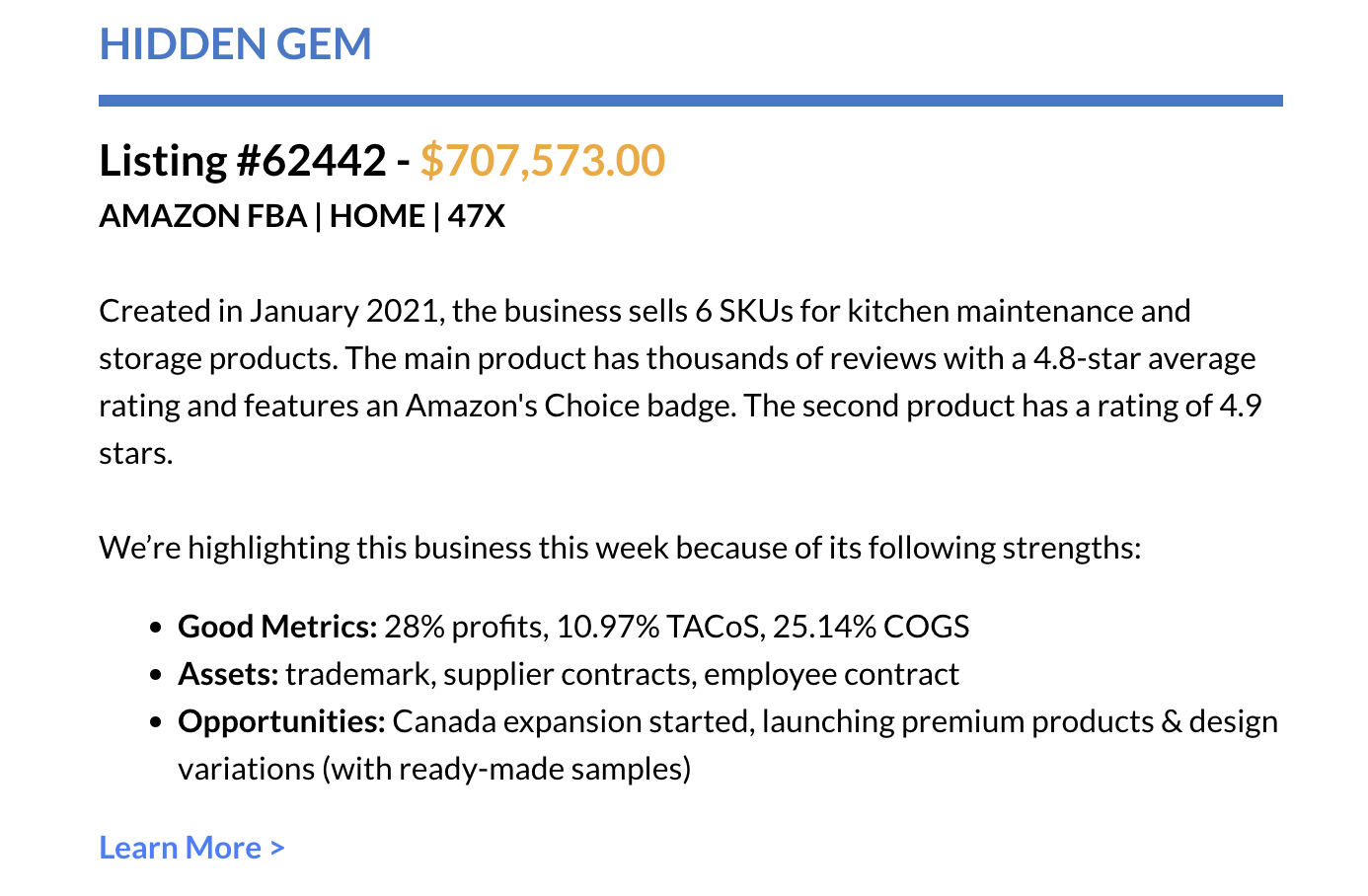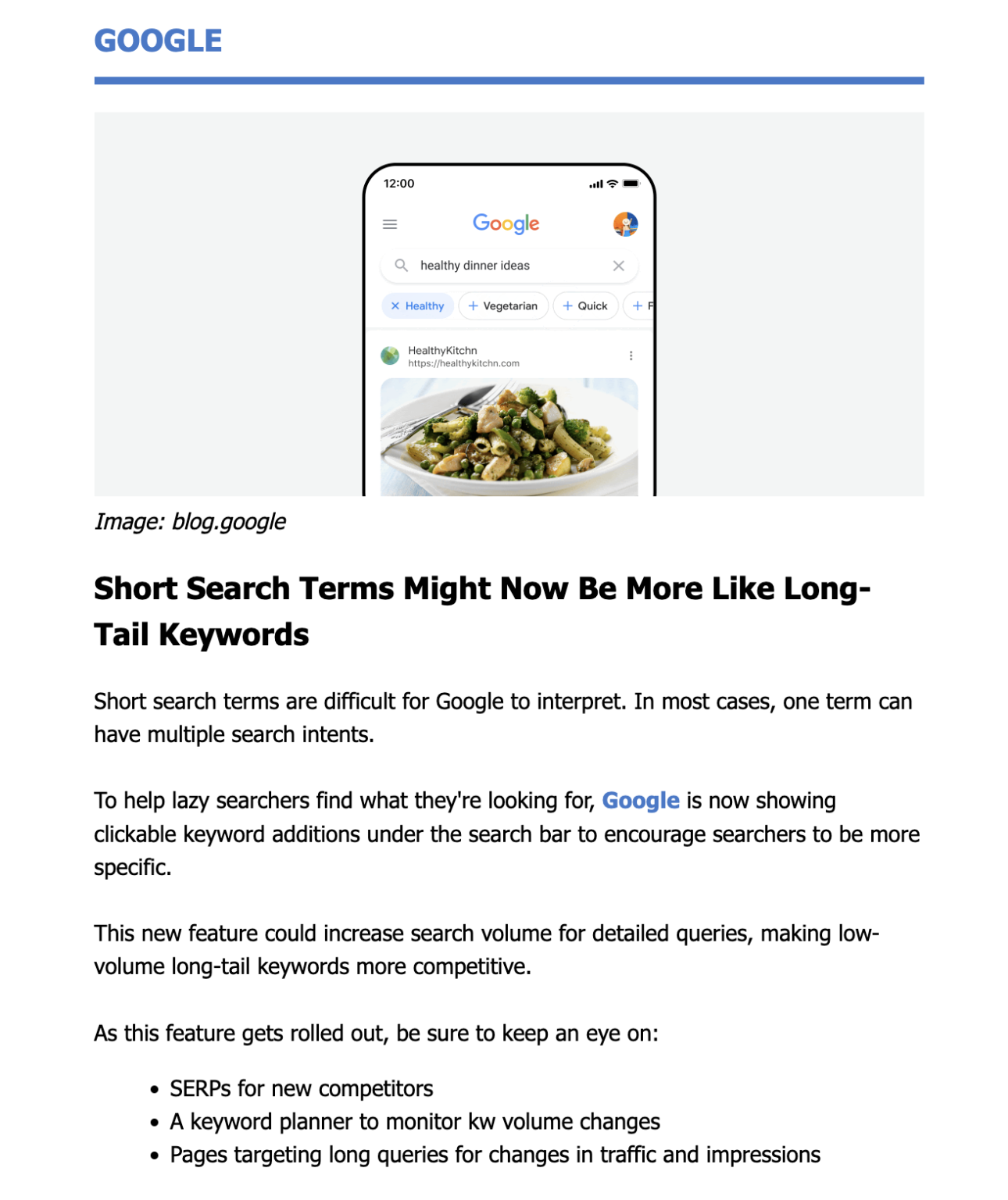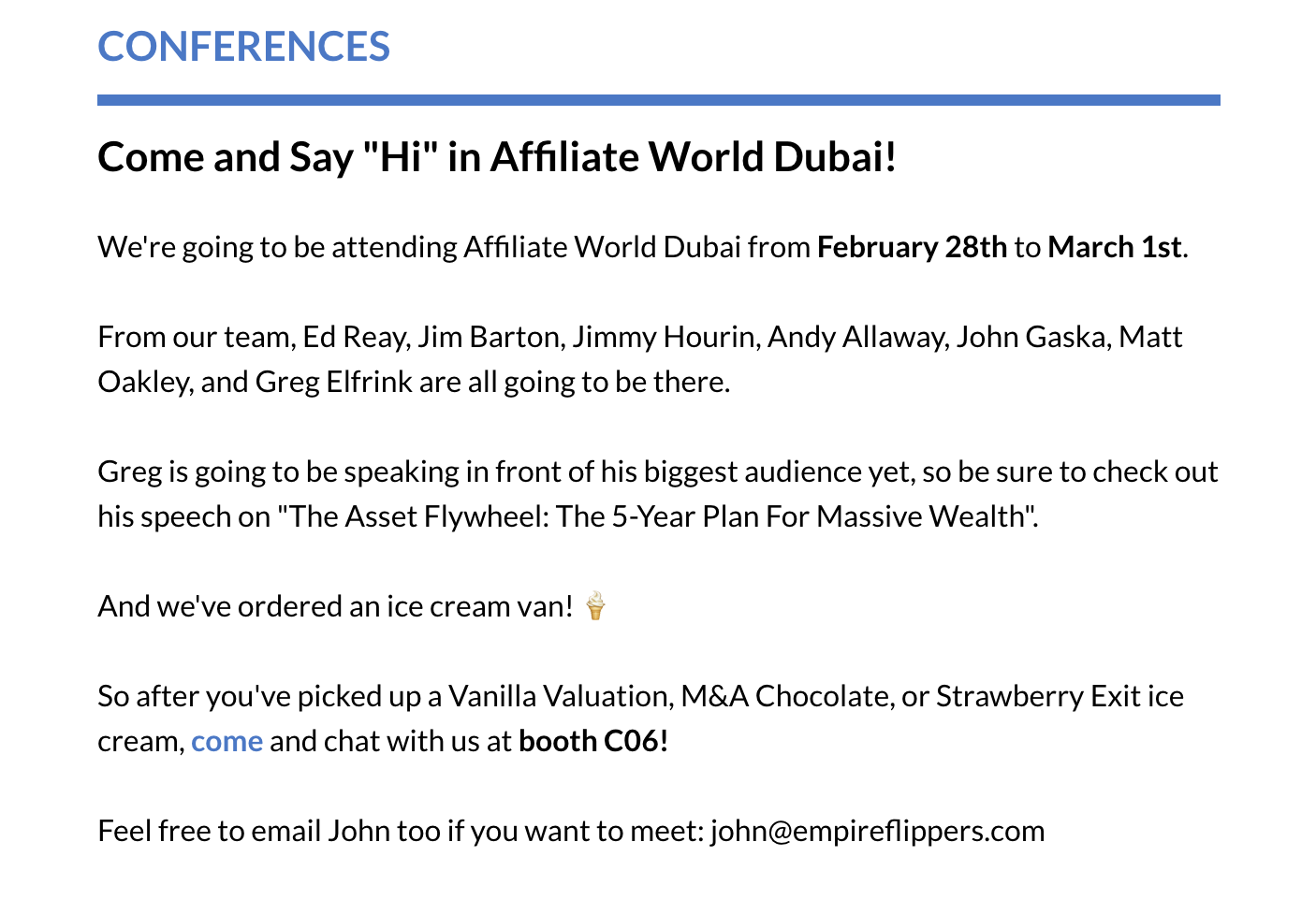How We Built A Powerhouse Email Newsletter (100,000+ Weekly Readers)
In the early days of email when there were few email service providers (ESPs) and we only had a basic HTML template to write on, email newsletters mostly came from media companies—email offered a way for them to share a directory of their latest news stories.
Since the email industry grew with more ESPs coming out and making email more accessible and adaptable for companies, how we used email as a marketing tool also changed.
Businesses started creating their own newsletters, sharing the latest deals and company news.
Over the years as the effectiveness of nurturing an audience through email has started to show, newsletters became more than just regular emails, they can now be mini media companies.
Take the case of Insider Inc. buying the majority shares in the Morning Brew for around $75M as one of the early examples of this. Then customer relationships management tool, Hubspot acquired the Hustle for around $27M.
Hubspot’s reasoning for the acquisition says it all about how newsletters have become their own media entities:
“By acquiring The Hustle, we’ll be able to better meet the needs of these scaling companies by delivering educational, business and tech trend content in their preferred formats,” said HubSpot’s senior vice president of marketing Kieran Flanagan in a statement. “Sam and his team have a proven ability to create content that entrepreneurs, startups and scaling companies are deeply passionate about, and I’m excited to bring them on board to take that work to the next level.”
An audience is the most valuable asset a business has and the best type of audience you can get is an email newsletter with an audience that regularly shows up. With this audience, you have the contact information of each member and you get audience data that can’t be taken away from you by the host server like it can on Google, Facebook, or Amazon.
With an email newsletter, you have the opportunity to turn what would just be a group of customers or followers into a fanatic fan club.
Yet, even though brands know this, they still neglect their newsletters. They add a newsletter box to their website, but they never actually provide the newsletter and instead just go straight in with the sales emails.
This is disappointing for the person who signed up expecting to receive a newsletter that tells the story of the brand and entertains and delights. I mean, how often do you intentionally sign up to an email list to receive sales emails?
Instead of a raving fan club subscribers, brands have a list of neglected, frustrated subscribers who leave their emails to collect dust in the Promotions tab. This, by the way, reduces the deliverability of those sales emails, so fewer people receive them, resulting in fewer sales.
At Empire Flippers, we could technically give ourselves a pat on the back and say we haven’t completely neglected our audience as we’ve run a newsletter for years. However, our self-praise wouldn’t be totally justifiable.
Our Old, Boring Newsletter
Audiences want to hear from brands. They want to know what’s going on at the company, what content they’ve created, and to get a feel of the company culture.
We were doing that with our old newsletter, but we didn’t put much into it.
Our old newsletter was called “The Friday Content Wrap Up”. It featured 4 pieces of content we produced that week. We would write an introduction with a description of each piece of content and further down the email we’d have sections with content descriptions (again).
See what it looked like here:
A big problem with the newsletter was it was two sizes too big as the second half of the email repeated the information in the first half. Almost all of the clicks were in the first half of the email, which meant we were spending twice as long as we needed to create the email every week.
The email was also predictable; every email had four sections with audio, written, and video content. As a result, the performance metrics were pretty dismal.
The read rate was around 60% and the click-through rate (CTR) for an email focused on clicks was only around 3%.
All we were doing was sharing our latest content. We were grossly neglecting our audience and only utilizing about 10% of the full potential we had with a newsletter.
Then, in 2021 we decided to revamp our newsletter to help us achieve our business goals.
Newsletters Need a Goal
The biggest problem with our old newsletter was it didn’t have a goal. It was based on a “Well, we should probably share our content to our email list.” mentality.
Without a goal, a newsletter lacks direction. After all, how can you know what to write if you don’t know what you’re writing for? And how can you know what to include in your email if you don’t understand the purpose of the content?
In my experience of writing our newsletter for the past 2 years, I’ve identified five goals a newsletter can have.
1. Boost Other Content
Email newsletters can be a strong cog in your content production machine. Sharing content from your other channels in your newsletter is a great way to boost its performance on those channels.
For example, if you share one of your recent YouTube videos in your newsletter, the extra traffic that comes from it will help boost the video’s ranking.
The reverse is also true. You can share a link to your newsletter signup form in your YouTube video descriptions to grow your list.
Important email performance metrics to track for this type of newsletter include
- CTR
- New newsletter signups
- New social media followers/subscribers
- Email shares
2. Engage and Promote a Community
If you have a community, a newsletter is a great medium to keep members in touch with the community.
Share the most popular conversations and community events like a weekly community bulletin. This is also a great way to show non-members what goes on in your community and get more members.
Important metrics:
- Community signups
- Community logins/engagement
- CTR
- Open rate
- Email shares
3. Share Product and Service Updates
A newsletter could act as a medium to share updates you’ve made to your product or service. This is especially useful for SaaS companies.
It allows you to keep your audience up to date with the latest features they can use in your software. Keeping your audience informed on how they can use your product or service is a great way to improve customer retention, lifetime value, and satisfaction.
Your newsletter can also inform your product if you ask your readers what features they’d like to see and if they have any feedback on your current features.
Using a newsletter in this way is also beneficial for large B2B service providers who want to maintain healthy relationships with their clients.
Important metrics:
- Read rate
- Unsubscribe rate
- Reply rate
4. Share Deals and Product Launches
Many of your customers and fans of your brand will want to be notified when you’ve got new products and offers. Having a newsletter dedicated to keeping your subscribers up to date is a great way to maintain contact with your audience and reward them for their loyalty.
Important metrics:
- Open rate
- CTR
- Sales
5. Brand Love
This is the best form of a newsletter you can create as it incorporates a little piece of the other newsletter types into one with a little added extra.
Brands that nurture their audiences are able to last in competitive markets. They’re not solely reliant on quick sales from ads or sales emails for revenue—avenues that aren’t sustainable in the long term because eventually, competitors will outbid you, the ad platforms will increase the cost per click or will ban your account, and your audiences will suffer from ad fatigue (after all, there’s only so many times they can take you up on one of your offers).
By nurturing your audience over the long term without any expectation of direct sales, you build a valuable asset that supports your business.
The aim of a brand love newsletter is to educate and entertain your readers. You achieve this by sharing content your readers will find useful in the form of “how to” articles, explainer videos, product demonstrations/walkthroughs, or the latest news in your niche.
To connect your readers with your brand, share company events and updates. Even feature your employees to make your brand personable.
As you’ll see later in this article, we do all of the above. It’s for this reason our emails get an average 47.6% open rate and 96.7% read rate.
It’s best to send this type of newsletter weekly or bi-weekly as you want it to be quite big. Making the newsletter big allows you room to also include elements of the other types of newsletters, including sections for product offers and updates, company news, the latest company content, and community promotion.
While revenue isn’t the most important metric for this type of email, it’s certainly effective in boosting sales for your business.
While your competitors are spending money on follow-up advertising campaigns without collecting their own subscriber base free from the control of advertising platforms, you can be keeping your brand top of mind for your audience consistently, for free.
That said, your brand love newsletter can be a source of revenue for your business. It can act as its own mini media company just like the Hustle is for Hubspot.
You’ll have likely noticed “sponsored” sections of newsletters. Even if you don’t charge brands for space in your newsletter, you can use it as an incentive for other brands to feature your company in their marketing channels to their audiences.
You can also generate revenue directly from your newsletter by sharing offers.
We once ran a four-part educational series for a funding raise for our sister company, EF Capital. From that campaign, we generated $100,000 in revenue from one reader and it wasn’t even a direct sales campaign.
As for the metrics you should be tracking, reader feedback is the most important. Your readers must enjoy reading your newsletter. It must be worth it for them to spend their time reading it.
Other important metrics include:
- Open rate
- Read rate
- Share rate
- Subscriber rate
Whichever type of newsletter you think will be best for your business, it should be tied to business goals. Whether that’s to increase revenue, increase customer usage of your product or service, increase customer lifetime value, improve your product or service, grow your community, or something else. Your business goals will inform which type of newsletter you need.
For us, the This Week in M&A newsletter helps us achieve a number of business goals:
- Growing brand awareness
- Growing our customer base
- Establishing a new marketing channel
- Building a channel for brand collaborations
- Increasing revenue
Once we decided on what type of newsletter we were going to create, we got to work on the pre-launch research and preparation.
Three Months of Research and Launch Prep
We spent a whole quarter researching and preparing for the newsletter launch. During that time we researched all of the other newsletters in our industry plus the most famous newsletters from other shouldering industries.
When we decided on which type of newsletters we wanted to replicate the most, we broke down the anatomies of the following email newsletters:
- The Morning Brew
- The Hustle
- The Daily Skimm
- The DTC Newsletter
- Robinhood Snacks
- Benedict’s Newsletter
- The Tilt
When we assessed the newsletters, we looked at their content, formatting and text, consistency metrics, and tonality.
Content
When we read the emails, we asked ourselves how they were sharing content within them: were they offering commentary or expert insight about the content? Or were they sharing overviews of the content without any commentary?
We also looked at whether the content was their own or from other sources.
Formatting and Text
The layout of the emails was also taken into consideration. We wanted to know how they presented the content in terms of how many and what types of design elements they used, the length and style of sentences and paragraphs, and the total word count.
Consistency Metrics
By reading the emails every week, we were able to identify certain trends including
- Delivery frequency
- Subject line length
- Subject line content
- Calls to action used
- Ad placements
- Links to their site
We also took note of the share of content types they often used. Some shared around 50% of their own content, with the other 25% being company news, and the final 25% being industry news and expert features.
Tonality
This element is more subjective than the others.
We wanted to get a feel for how the brands presented themselves in their newsletter: did it match how they present themselves on other channels? Or was it more personal?
The tonality of the content is highly important for reader loyalty. While content quality and relevance are the most important elements, tonality influences how much your readers enjoy your newsletter, and the more they enjoy it, the more they’re going to read it and want to share it with friends.
We also wanted to understand how they present information, including whether they tell stories or share facts.
Once we understood the inner anatomies of the newsletters, we researched how they were promoted.
Newsletter Growth Channels Research
To launch our newsletter, we needed to have a plan for how we were going to promote it.
When researching the other newsletters, we analyzed how they were promoting themselves internally and externally.
Internal promotion is how a company uses its own channels to grow the newsletter audience.
We looked at how the companies used their current audience to get subscribers, including whether they had a referral program, a subscription option on their website, and lead magnets.
External promotion is how a company shares its newsletter on external channels. We split this research up into organic and paid marketing.
Organic marketing includes social media profiles. If the newsletter was being promoted to social followers, we wanted to know how the brand was doing that and how effective it seemed to be based on the level of engagement newsletter promotions were getting.
Some newsletters had their own websites, so we looked at the search engine optimization (SEO) profile of those sites to see how much Google organic traffic they were generating.
We were also able to see whether the companies were running paid ads for their newsletters on Facebook Ads Library and Google search results, and if we were being shown retargeting ads after visiting their sites.
If they were running ads, we created swipe files of the ads to see how they were promoting the newsletter in terms of what creative assets they were using and what their signup funnel from the ads looked like.
While we were conducting this research we were also setting up the backend of the email.
Getting Set Up On Our ESP
Our customer relationship management tool is Hubspot so we built the newsletter there to connect the newsletter data with all of our customer data.
We created a campaign for This Week in M&A to track its performance. Inside Hubspot, we can track how much of our customer base reads our newsletter, the information we have on our readers, and which content our audience engages with. This data gives us another level of insight into our audience as we can see which topics they’re interested in most, which can inform our other marketing efforts.
We can also see if any sales conversions have come directly from the email. However, we’re not able to trust the revenue tracking based on email influence on deals because of how long and complex our sales cycle is (I’d love to say that the newsletter has generated over $17M worth of business for us, but I know fine well it hasn’t).
The only conversions we can see are website visits and signups coming directly from the newsletter.
Outside of the usual email metrics—open rate, click-through rate, read rate, etc.—we also track:
- Most clicked links: tells us which content is the most popular.
- Most engaged contacts: tells us who our most engaged readers are.
- Email engagement over time: tells us when people open our emails.
- Clicks by browser type: tells us where readers are opening our emails.
All of these metrics give us insight into how our readers are engaging with our newsletter and inform us on how we should format it for the best reading experience, and what content we should share.
With Hubspot’s “Don’t send to unengaged contacts” check box option you can choose not to send your email to subscribers who haven’t read a certain number of emails—we’ve it set to 10 now and have managed to stay out of the Promotions folder of our reader’s inboxes.
Once we had our research and everything set up and ready for launch, our team got together to prepare the email template and guidelines, then we sent the first email.
This Week in M&A is Born
This Week in M&A is a weekly email newsletter that provides the latest online business mergers and acquisitions (M&A) news, industry trends, and content.
We scour the web for the latest news stories and pack them into the newsletter. We also share content from our blog, YouTube channel, podcast, and guest features on other podcasts and webinars.
The newsletter is an entertaining source of industry news. The reader is updated with everything they need to know about what’s happening in the industry in just a few minutes. We pack actionable knowledge into every story section of the newsletter so the reader always walks away with something useful they can apply to their professional life.
Let’s take a walk through the email.
Trend of the week
Every week we open the email with a trending topic and provide a bit of context and business ideas. The trend of the week usually follows the same 3-part structure:
- In part one we state what the trend is and include stats and data that show how the topic/niche/product is trending.
- In part two we share some information about the niche, especially if it’s obscure or specific.
- In part three we highlight the opportunities with the trend. We usually list the opportunities for content site creators, ecommerce merchants, and developers/SaaS builders and list them out succinctly.
Here’s an example of a trend of the week:
Below the trend of the week we list out the contents of the newsletter in bullet points before the next section.
Marketplace Data
We share data from our marketplace for that week, which includes the following:
We share this data because we value transparency and like to show this to our audience when we can. This is why we also share our quarterly reports.
The Main Story
We like to open the main body of the email with a bang, so we give the biggest story upfront. This is usually a big news event that we break down and explain to our readers. We share all of the most important information in an easy-to-understand way. Sometimes we’ll also include our analysis if the story topic is within our area of expertise.
This story can also be a recent big industry report—our readers like this type of content because we pull out the biggest takeaways from the report so they don’t have to read through the entire report.
If there aren’t any big news events happening or any recent reports out, we’ll share our biggest piece of recent content that has a ton of educational value.
This is an example of our analysis of an industry trend:
The Opportunity Podcast Latest Episode
Next, we share the latest Opportunity podcast episode. We give away all of the best bits from the interview in the email so the reader gets all of the value from the content.
The episodes are usually our most clicked content because we get some great guests on the podcast.
Hidden Gems
Every week we feature a special listing from our marketplace. We share some details about the strengths of the business without using any sales copy.
The Hidden Gem section is one of our reader’s favorite sections. We get great feedback and the listings get a ton of link clicks and listing Unlocks.
Secondary Stories
The secondary stories are either content from other brands and sources, the news, or our content channels.
News stories take priority as the main purpose of the newsletter is to keep our readers up to date on what’s happening in the industry.
The length of these secondary sections depends on the content. For example, when there’s a Google update we usually do a short feature. Our audience loves this content because it directly affects them.
Company Announcements, Other Content, and Promotions
If we’re going to events we’ll let our readers know and invite them to come and meet us.
We’ll also share company updates including when we’re hiring, and updates to our services. If we’ve been featured on other podcasts or webinars we’ll share that content.
Sometimes we also share promotions like our Shopify Seller Relief offer were running now that gives Shopify store owners 25% more on the sale of their business.
News Snippets
This section is good for readers to get snapshots of the biggest news that’s relevant to them so they can go and check it out.
It also helps inform our content. Every week we share different news topics and see how many clicks they get.
Sections to Connect With the Audience
Our audience is proud of its nomadic culture, so we celebrate that by sharing pictures of our team’s travels in our Living La Vida Nomad section.
This creates a connection with our audience and showcases the people behind our brand. It also gives our readers a sense of our company culture.
We like to end the email with a giggle, so finish off with our Meme of the Week. This section shows our company culture and personality.
We also invite readers to share their photos and memes.
Feedback
This is probably the most important section of the newsletter. You need to know how your readers feel about your newsletter. With a feedback option, your readers tell you how to create your newsletter.
They can offer some brilliant feedback for the following reasons.
You Could Be Doing Things Your Readers Don’t Like
We had one piece of feedback in the early days of the newsletter about how we were using too many GIFs and how we were formatting the email the same way each week.
When we asked our readers more about it, we found out that others were skimming through the email because it was predictable. One reader even thought we’d sent the same email out two weeks in a row.
You Get Content Ideas
Your audience has an idea of what they’d like to get from your newsletter.
While every reader will have their own wants, if one gives you feedback with an idea it could be good for all readers.
A feedback section gives readers the option to share what content they’d like to see.
You Discover What Your Readers Like
If you’re not getting feedback and only judging whether readers like your emails on data, it’s hard to know whether they’re actually enjoying the content. When you get good feedback, you know what to keep sharing in your newsletter. If you share resources and get positive feedback, you learn what type of resources your readers like.
They Highlight Mistakes
You won’t likely get feedback on minor spelling mistakes or grammatical errors, but if you share misinformation then someone might point it out. This is good for keeping your content accurate.
That’s all of the sections we share in our email. We’ve had sections in the earlier editions that we decided to remove, including a humorous ad section where we audaciously try and sell our services to the audience.
We decided to remove it because it took too much time to craft with minimal reward. We found it better to instead focus on keeping the overall writing entertaining.
Based on the feedback we’re currently getting and the engagement metrics we’re seeing, our readers like our newsletter as it is, so we won’t make any drastic changes. Though we’re always testing small changes to make improvements.
Our main focus is the quality of the content and the writing.
How I Find Great Content to Feature
Because the goal of our newsletter is to educate and entertain our audience with the latest and most relevant news and content from our industry, I needed to develop a system for identifying the best content to achieve that goal.
I call this system the Story Atom.
The Story Atom
I identified four key elements to judge our content: important, actionable, relevant, and interesting.
You can share content that has only one of these elements, but your best content will include them all.
Important
To judge how important we think a piece of content or story is for our readers to know about, I ask myself how big the story is and how much it will impact their lives now and in the future.
I like to think about the story this way: if you scrolling the news on your phone in a cafe while sitting next to one of your readers, how quickly would you rush to tell them? Would you hesitate whether it’s worth starting a conversation over? Or would it be somewhere in the middle?
The more you feel the need to tell them, the better the story is. If you’d hesitate, then maybe think again about whether it’s content worth including in your newsletter.
When judging the importance of a story, consider the following:
- The significance of the facts and data
- What people have said on the subject/event
- The importance of the people and companies involved
- The consequences of the event for the reader and the industry
Actionable
Content that’s actionable gives the reader information they can apply to their life.
Actionable content tends to come in the form of step-by-step guides or how-to’s, but if you interpret a news story for the reader and give them some practical advice based on your expertise, then that too can be actionable content.
Relevant
Relevance is a bit subjective as you’ll likely have a number of different personas in your audience; some stories will appeal more to one persona than another one.
Your content doesn’t have to appeal to all personas at all times, but be sure to include all readers regularly. Mix up the content each week so your newsletter doesn’t become mundane with one section for each audience.
The relevance of content is judged by how related to the reader’s life it is.
Interesting
This is the least important element to include because readers don’t really need interesting content, but they do need content that’s important, actionable, and relevant.
However, it’s important to make those other types of content interesting and you could find a piece of content that’s so fascinating and relevant that your audience would benefit from reading it just out of entertainment alone.
When including interest in your content, focus on the following:
- How it affects people (how they feel about it)
- Philosophy/moral of the story
- Consequences of the event (what it means)
If you use the Story Atom when sourcing your content, you shouldn’t go far wrong when finding content your readers will benefit from and enjoy.
You can also use the atom to craft your copy.
How I Craft Entertaining and Valuable Copy
Each of the four Story Atom elements will be prevalent in every piece of content you share.
Refer to the Story Atom as you’re writing your copy. Identify what’s important first and foremost and craft the rest of the copy around those core points.
Include information that’s relevant. When you’ve finished writing a draft, are there any actionable takeaways you can think of for the reader?
Finally, you can add an element of interest. In the example of a piece of content earlier on in this email from a podcast episode we shared, the core topic was an entrepreneur who invented a system 7-figure business owners use to scale their operations.
When I listened to the podcast, I heard her say that she created the system to overcome her own unorganized personality. I found that interesting, so I decided to add that element into the story. I also found out she was only 21 years old, so I included that, too.
Those extra details aren’t important for the reader to know, nor are they actionable or relevant, but they make the story more appealing.
Adding that interesting influence will actually make the reader enjoy the content more as it adds a story element to it. People love stories and they remember them, so the reader will remember the content more and be more willing to share it with friends.
How I’m able to identify these four elements when crafting copy stems from a deep understanding of our audience—I know what they’re interested in, their humor, and their likes and dislikes.
Having this understanding allows me to write copy they enjoy. Because I get their humor, I’m able to bang out the occasional pun.
The length and detail of each section are determined by the depth of the content we’re reporting on; some stories cover a lot of important topics and have a lot of detail, so they require more coverage; others are more straightforward with not a lot of interesting or important details.
Every sentence should give something valuable to the reader. If a sentence doesn’t add much value or it’s not very interesting, then I’ll tend to leave it out.
That’s our focus for every email: making sure it gives a ton of value.
Why This Week In M&A Is the Best Newsletter In Our Industry
The day we launched This Week in M&A, our audience was ecstatic and it got some virality across the industry.
Big personalities were sharing it on their social media. The biggest names in the industry were reading it (and still do).
It’s become so much more than just a weekly email. We collaborate with brands with exclusive features. When we share content from other brands, we let them know which gives us an inroad to start conversations.
We believe our readers love the newsletter because it gives without expecting anything in return and we think this is the future of content marketing.
The Power of Zero-Click Content
How people consume content is changing and how platforms allow you to deliver content is changing in tandem with that shift.
The online world went through a “click-bait” age of all content being focused on getting people to click through to see a blog post, YouTube video, podcast, or something else.
Social platforms and inside of emails got flooded with dramatic headlines and bit.ly links to rubbish content.
The online population was frequently getting sucked into watching long videos or reading long posts just to get a small piece of value. In a 40-minute video, 35 minutes would be spent waffling on selling the viewer on what they’re about to learn in a cheezy sales pitch, then only in the final five minutes would the viewer get what they’d actually come for.
The population grew tired of these marketing shenanigans and started to get more selective with what they clicked.
That’s when social platforms started to take notice as the have all of the data that shows how people engage with content.
Facebook and Instagram don’t allow you to share links in posts and other platforms punish posts that have links by limiting their visibility.
Email is the only platform that can’t be regulated in this manner, but it doesn’t mean we shouldn’t adapt to this change in content consumption.
While all of your competitors are still click-baiting people, you can stand out by giving people what they want without any expectation of anything in return.
This might sound counterproductive when you’re marketing your content to get sales, but don’t underestimate the power of nurture marketing. Because online business is so fiercely competitive now, the truth is you have to give as much away as possible to compete.
It’s no longer enough to pile thousands of dollars into Facebook ads and outbid your competitors for ad space. Eventually, someone else is going to come and outbid you. To win the long-term game, you need to build an audience that visits you frequently, not the other way around.
When you have this as an asset, it’s very hard for competitors to take that away from you. After all, if every week you’re giving people something valuable, why would they go anywhere else? And which brand are they going to choose when it’s time for them to purchase your product, the one that’s been hassling them with ads for the past three months, or the one that has educated and entertained them for the past three years?
And as a customer, which brand are they going to buy from again, the one that took their sale and did nothing more? Or the one that rewarded their custom by providing them with helpful tips and info on how to use their products every week, for free?
It’s for these reasons we’re not tracking revenue from our newsletter. In fact, it isn’t tied to any financial goals at all.
In a time of inflation where the dollar is weakening by the hour, brand loyalty is the ultimate business currency.
What Will Your Newsletter Be?
Hopefully, this zero-click article has given you an understanding of what makes for a great email newsletter.
After you get clear on your business goals and how email marketing fits into your plans, you can start considering how an email newsletter can be your winning marketing tool.
If I were to add a cheeky little call to action to this piece of content, I’d invite you to sell your business newsletter if you already have one.
We have business owners in our buyer network who buy email lists so they can use the audience to grow their businesses.
Or if you’re a buyer looking for an audience, create a free Empire Flippers account and browse our marketplace to find yourself a healthy and profitable content site you can bolt onto your business (ok, that’s technically two calls to action.)





